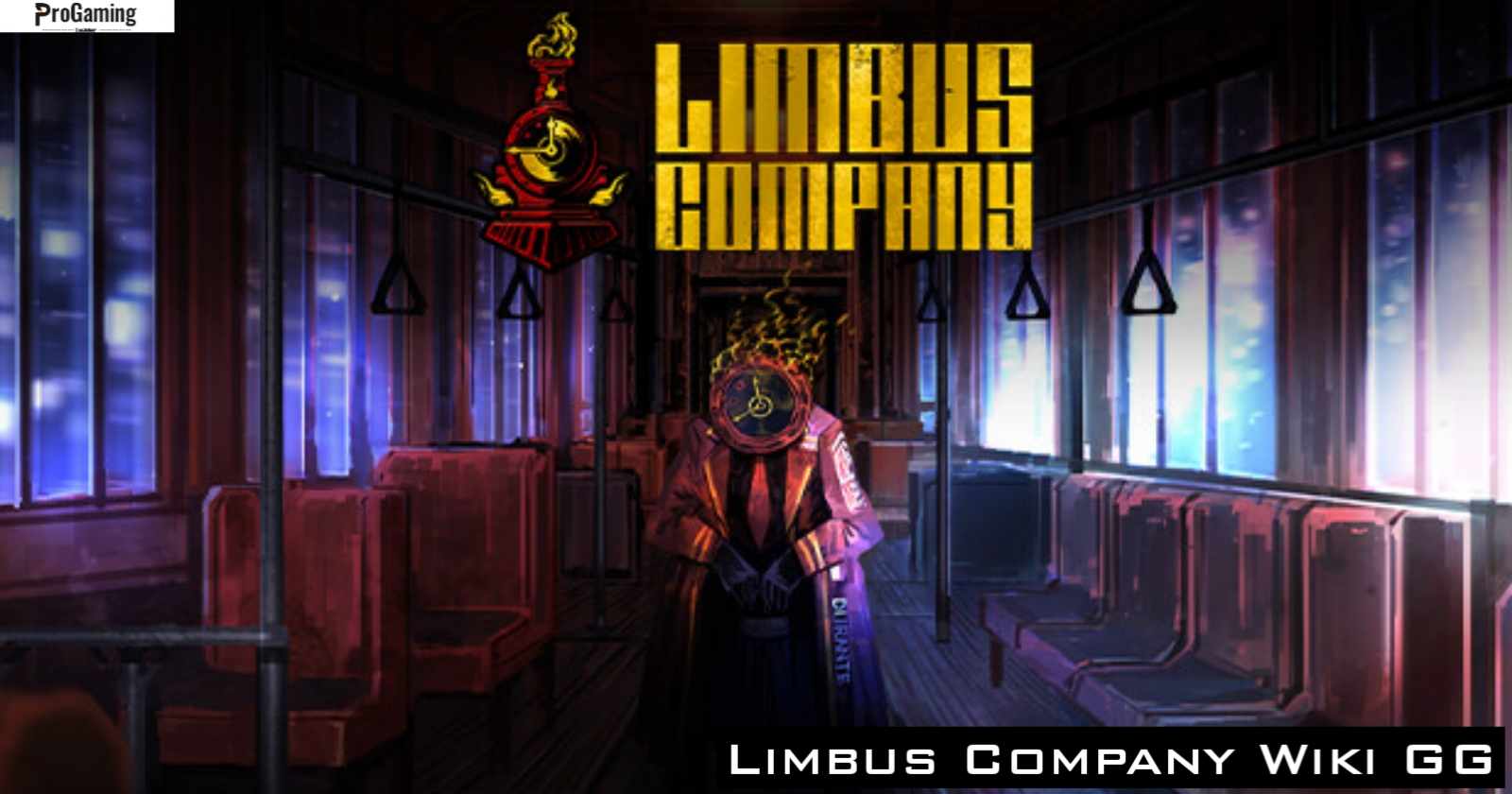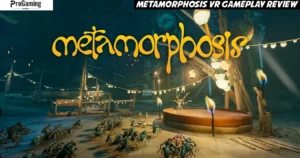Limbus Company Wiki GG
Limbus Company, developed by Project Moon, is a complex strategy RPG that merges dark storytelling with intricate gameplay mechanics. Set in a dystopian universe, it captivates players with its unique art style, engaging plot, and deep character development. In this article, I’ll provide an in-depth look at Limbus Company, exploring its core elements and sharing my personal take as a gamer. This article covers everything you need to know about the game, from its overview and gameplay mechanics to the main characters and my personal opinions.
- Developer: Project Moon
- Genre: Role-playing Video Game, Adventure game, Strategy
- Publisher: Project Moon
- Platforms: Android, iOS, Microsoft Windows
- Engine: UnityMode(s): Single-player
- Initial release date: 26 February 2023
1. Limbus Company Overview
Limbus Company is an ambitious game by Project Moon, known for creating immersive worlds filled with rich narratives and challenging gameplay. The game is set in “The City,” a bleak, dystopian urban environment where power is divided among numerous syndicates and megacorporations. Players take on the role of Dante, the amnesiac manager of a group of unique individuals called “Sinners.” Together, they navigate the ruins of Lobotomy Corporation to recover valuable artifacts known as Golden Boughs.
The game’s story is delivered through chapters called Cantos, each inspired by Dante’s Divine Comedy. These cantos unravel the backstories of the Sinners, each of whom represents a distinct literary figure. The narrative is deeply entwined with the game’s setting, adding layers of meaning and context to the player’s actions and decisions.
Limbus Company stands out due to its atmospheric world-building and character-driven storytelling. Every district in The City is meticulously crafted, reflecting the dark, oppressive nature of the game’s world. From the bustling yet dangerous streets of District 9 to the eerie waters of District 21, the game continually pushes players to explore and survive in a hostile environment.
One of the game’s most intriguing aspects is how it ties in with Project Moon’s broader universe, including titles like Lobotomy Corporation and Library of Ruina. This shared universe allows for deeper lore and connections between games, providing long-time fans with a richer experience. For newcomers, the game serves as an entry point into Project Moon’s intricate narrative web.
Despite its narrative strengths, Limbus Company isn’t without its challenges. It features a gacha system for unlocking new Sinner identities and E.G.O. equipment, which has been a divisive element among players. While it allows for varied playstyles and strategies, the randomness of the system can be frustrating, especially when desired characters or gear are hard to obtain.
In essence, Limbus Company is more than just a game; it’s a deep, immersive experience that challenges players to think strategically and invest emotionally in its characters. It’s a title that demands attention and rewards patience, making it a standout in the strategy RPG genre.
2. Limbus Company Core Game Mechanics
The core mechanics of Limbus Company are centered around tactical turn-based combat, strategic resource management, and narrative choices. The game’s combat system is distinct, featuring a coin-flip mechanic that adds an element of chance to each attack. This randomness requires players to be adaptable and strategic, as even the best-laid plans can be upended by an unlucky flip.
Each Sinner has multiple identities that players can unlock and equip, altering their abilities and playstyle. Identities are essentially alternate versions of the Sinners, each with unique skills and attributes that cater to different strategies. This system allows for a high degree of customization, letting players tailor their team to tackle specific challenges.
A significant part of combat revolves around sin categories, which are tied to the characters’ attacks and abilities. Sins include categories like Wrath, Sloth, Lust, and more. Players can chain attacks of the same sin to create powerful combos, which is a key strategy in maximizing damage output. However, this system also requires careful planning, as enemies often have resistances or weaknesses to certain sins.
E.G.O. abilities are another central mechanic, acting as powerful attacks that draw on the psychological state of the Sinners. These abilities consume resources called sin points, which players accumulate during battles. Managing these points is crucial, as using E.G.O. recklessly can lead to the Sinners entering a state of corruption, where they may harm allies or become uncontrollable.
Exploration in Limbus Company involves navigating dungeon maps filled with enemies, traps, and secrets. Players must carefully choose their path, as decisions made early on can have lasting consequences throughout a dungeon run. Each dungeon presents a variety of challenges, including puzzles that require specific Sinners to solve or environmental hazards that can deplete resources or health.
Resource management plays a significant role, with players needing to balance their use of items, Sin points, and other in-game currencies. The gacha system for obtaining new identities and E.G.O. abilities also ties into this, as players must decide when to spend their hard-earned Lunacy or tickets for summons.
The combination of these mechanics creates a complex, rewarding experience that keeps players engaged. The learning curve can be steep, especially for those new to strategy RPGs, but the game offers a depth of gameplay that is rarely seen in the genre. Every decision, from combat strategies to resource allocation, feels meaningful and impacts the overall progression through the game.
3. Detailed Canto Summaries
Limbus Company’s story unfolds through a series of cantos, each dedicated to exploring the backstory of a particular Sinner. These cantos not only advance the overarching narrative but also provide deep insights into the characters, making them more than just units in a strategy game. Below are summaries of some of the key cantos:
- Canto I: The Outcast (Gregor): This canto follows Gregor as he grapples with his past as a soldier during the Smoke War. As the Sinners delve into a ruined Lobotomy Corporation facility, Gregor confronts a monstrous abnormality known as the Golden Apple. This chapter explores themes of guilt and redemption, culminating in a dramatic battle that tests Gregor’s resolve and loyalty to the team.
- Canto II: The Unloving (Rodion): In this canto, Rodion leads the Sinners into a high-stakes infiltration of a J Corp casino in District 10. Disguised as a Tingtang Gang representative, Rodion must navigate a web of deception, confronting her old ally, Sonya, who represents her past life with the Yurodiviye Syndicate. The story is filled with tense moments and moral dilemmas, highlighting Rodion’s struggle between her former identity and her current mission.
- Canto III: The Unconfronting (Sinclair): Sinclair’s story takes center stage as the Sinners face Nagel und Hammer, a fanatical cult in District 11. Sinclair’s personal conflict with Kromer, a key figure in his troubled past, adds emotional weight to this canto. The narrative delves into Sinclair’s guilt and his desperate attempt to reconcile with his past, making for one of the more emotionally charged chapters in the game.
- Canto IV: The Unchanging (Yi Sang): This canto explores Yi Sang’s history with the League of Nine Littérateurs, a group of writers and thinkers who met tragic ends. The Sinners must navigate K Corp’s zombie-infested offices while Yi Sang comes to terms with the losses of his friends. The Canto is a blend of introspective storytelling and intense action, with themes of memory, loss, and the impact of one’s past decisions.
- Canto V: The Evil Defining (Ishmael) Set against the backdrop of District 21’s Great Lake, this canto follows Ishmael’s quest for vengeance against Captain Ahab, her former captain who led the Pequod to ruin. This chapter features naval combat and sea monsters, adding a fresh dynamic to the gameplay. Ishmael’s journey is one of revenge and forgiveness, making it a standout in the game’s narrative.
Each canto in Limbus Company is a finely crafted narrative that delves into the psyches of its characters. The blending of personal stories with broader plot developments keeps the game’s narrative engaging and emotionally resonant. As a player, I found myself deeply invested in each character’s journey, eager to see how their pasts would influence their actions in the present.
4. Limbus Company Gameplay Features
Limbus Company boasts an array of gameplay features that elevate it beyond a typical strategy RPG. Here’s a look at the standout features that define the Limbus Company experience:

- Turn-Based Combat with a Twist: The core of the game’s combat revolves around turn-based mechanics with a unique coin-flip system that determines the effectiveness of attacks. This adds an element of unpredictability, requiring players to think on their feet and adapt their strategies as battles unfold.
- Sinner Identities and E.G.O. Abilities: Sinners can equip different identities, each offering distinct skills and combat roles. This system allows for a high degree of customization, enabling players to build teams that suit their preferred playstyle. E.G.O. abilities, tied to the Sinners’ emotional states and sin categories, provide powerful options in battle but require careful management of sin points to use effectively.
- Dungeon Exploration and Environmental Challenges: Beyond combat, Limbus Company features dungeon exploration where players must navigate through maps filled with traps, puzzles, and branching paths. Each decision can have lasting impacts, and players must carefully manage their resources and Sinners’ conditions to survive the journey.
- Sin Chain System: The sin chain mechanic allows players to link attacks of the same sin category to unleash powerful combos. Mastering this system is crucial for maximizing damage output and efficiently taking down tougher enemies, especially during boss encounters.
- Dynamic Boss Battles: Boss fights in Limbus Company are more than just stat checks; they involve multiple phases, unique mechanics, and the need for strategic planning. Players must exploit weaknesses, manage buffs and debuffs, and adapt to changing conditions mid-fight, making each boss battle a highlight of the gameplay experience.
- Live Service Updates: As a live service game, Limbus Company benefits from regular updates that add new content, balance changes, and seasonal events. This keeps the game fresh and encourages players to return frequently, ensuring that there’s always something new to explore or achieve.
The combination of these gameplay features makes Limbus Company a standout in the strategy RPG genre. Its complex mechanics, layered storytelling, and high replayability offer a rich and rewarding experience for players willing to dive into its depths.
5. Main Characters
Limbus Company’s characters, known as Sinners, are not only key to its story but also integral to its gameplay. Each Sinner is inspired by literary figures, and their unique traits and abilities make them memorable. Here’s a closer look at some of the main characters:

- Dante: As the player character and leader of the Sinners, Dante is an enigmatic figure with no memory of their past. Dante’s role is pivotal, guiding the team through the dangers of The City while making critical decisions that shape the story. Their communication, limited to the ticking of the clock on their head, adds to their mysterious persona.
- Yi Sang: Quiet and reflective, Yi Sang is based on a 20th-century Korean poet and writer. His combat style focuses on exploiting enemy weaknesses with precision strikes, making him a valuable asset. Yi Sang’s narrative arc deals with loss and the impact of his past, adding a somber tone to his character.
- Faust: A strategic thinker and manipulator, Faust is inspired by Goethe’s “Faust.” Her abilities often involve battlefield control, including debuffing enemies and supporting her allies. Faust’s cunning nature makes her a key advisor within the group, often providing insights that guide the Sinners through complex situations.
- Don Quixote: Based on the legendary character by Cervantes, Don Quixote is an idealistic fighter who charges into battle with unrelenting zeal. Her attacks are wild and often unpredictable, reflecting her quixotic nature. Despite her delusions, Don Quixote’s bravery and determination make her a fierce combatant.
- Gregor: Gregor’s insect-like mutations and abilities are a nod to Kafka’s “The Metamorphosis.” As a former soldier, Gregor struggles with his past and the trauma of war. His combat style revolves around poison and corrosive effects, allowing him to deal damage over time and weaken enemies significantly.
- Sinclair: A young Sinner with a troubled past rooted in religious fanaticism, Sinclair’s abilities focus on exploiting enemy vulnerabilities. His personal journey of growth and redemption is one of the most compelling in the game, as he grapples with guilt and the desire for forgiveness.
- Ishmael: Drawing inspiration from Melville’s “Moby-Dick,” Ishmael is a sailor with a thirst for vengeance. Her abilities are uniquely suited to dealing with aquatic and naval challenges, reflecting her maritime background. Ishmael’s story is driven by her need for retribution against those who wronged her.
- Heathcliff: Inspired by the brooding anti-hero from “Wuthering Heights,” Heathcliff is a complex character driven by loss and vengeance. His powerful attacks can be self-damaging, reflecting his tumultuous emotions and the destructive nature of his personal vendettas.
The diverse cast of Sinners in Limbus Company not only enhances the narrative but also provides a wide array of tactical options in gameplay. Each character brings their own strengths, weaknesses, and unique stories, making team composition a key strategic element.
6. Graphics and Performance
Limbus Company’s graphics and performance are integral to its overall appeal, combining a unique art style with polished technical execution. Here’s an in-depth look at these aspects:
- Art Style: The game’s visuals are standout, blending gothic and industrial aesthetics with a vibrant, surreal color palette. Characters are designed with attention to detail, each reflecting their literary origins and personal traits. The environments are equally striking, capturing the oppressive atmosphere of The City with dark, moody visuals that draw players into its dystopian world.
- Animation Quality: The game features fluid and expressive animations, particularly during combat. Each attack and ability is accompanied by dynamic visual effects that enhance the sense of impact. The animations not only look impressive but also serve to reflect the emotional state of the characters, adding a narrative layer to the gameplay.
- Performance: Limbus Company performs well across platforms, including PCs and mobile devices. The game is optimized to run smoothly, with minimal load times and responsive controls. However, performance can vary on older devices, where occasional frame drops or longer loading screens may occur. Project Moon has been proactive in addressing these issues through regular updates and optimizations.
- Audio Design: Complementing its visuals, the game’s audio design is top-notch. The soundtrack ranges from eerie, atmospheric pieces that set the tone for exploration to intense, adrenaline-pumping tracks that accompany combat. Voice acting is used sparingly but effectively, adding depth to key narrative moments and character interactions.
- User Interface: The user interface is clean, intuitive, and consistent with the game’s overall aesthetic. Important information is easily accessible, allowing players to manage their Sinners, navigate maps, and engage in combat without unnecessary clutter. The dark color scheme, accented with vibrant highlights, ensures that the UI is visually appealing and functional.
- Ongoing Updates: Since its release, Limbus Company has received regular updates aimed at improving graphics, performance, and overall gameplay. Project Moon’s commitment to refining the game based on player feedback ensures that the experience continues to evolve positively.
Overall, the graphics and performance of Limbus Company significantly contribute to its immersive experience. The game’s distinctive art style and smooth performance help to create a compelling world that draws players in and keeps them engaged.
7. Personal Opinion as a Gamer
As a gamer, Limbus Company has been an enthralling journey that blends deep narrative with challenging gameplay. One of the aspects I appreciate most is the game’s commitment to storytelling. Each canto feels like a well-crafted chapter in a larger novel, and the personal backstories of the Sinners add emotional depth that keeps me invested. It’s rare to find a game where I care as much about the characters’ arcs as I do about the gameplay itself.
The combat system, while complex, offers a level of strategic depth that I find highly rewarding. The coin-flip mechanic keeps battles dynamic, and the need to manage sin categories and E.G.O. abilities adds layers of strategy that go beyond simple turn-based tactics. However, the game’s difficulty can be punishing at times, and I’ve found myself facing steep learning curves, especially in the early stages.
The gacha system is a double-edged sword. While I enjoy the variety it brings in terms of team composition and strategy, the randomness can be frustrating when I’m aiming for specific characters or abilities. Fortunately, Project Moon has balanced this by providing in-game opportunities to earn currency, which helps mitigate the need for spending real money.
Visually, the game is stunning, and I often find myself pausing just to admire the artwork and design of the environments and characters. The audio design complements this perfectly, with a soundtrack that enhances the game’s atmosphere and emotional beats.
Overall, Limbus Company stands out as a unique and engaging RPG that offers a blend of strategy, storytelling, and aesthetic appeal. It’s a game that I continually come back to, eager to see what new challenges and stories await.
8. Conclusion
Limbus Company is a testament to Project Moon’s ability to craft deeply immersive and complex RPGs that resonate with players on multiple levels. It combines intricate gameplay mechanics with a richly woven narrative, creating an experience that is both challenging and emotionally engaging. From its strategic combat and unique character dynamics to its atmospheric art and sound design, the game offers something for a wide range of players.
While the game’s gacha elements and difficulty spikes may present hurdles, the overall experience is rewarding for those willing to invest the time and effort. The continual updates and expansions reflect the developers’ commitment to the community, ensuring that Limbus Company remains fresh and engaging.
What sets Limbus Company apart is its storytelling. The depth of the characters and the intertwining of their personal stories with the broader narrative make it more than just a game; it’s an exploration of human nature, morality, and survival in a world where every decision carries weight.
Whether you’re a fan of strategy RPGs, enjoy deep narrative experiences, or simply appreciate games with a unique aesthetic, Limbus Company is worth exploring. It challenges you to think, to strategize, and to immerse yourself in its dark yet captivating world. For me, it’s been a memorable journey, and I look forward to seeing how the story and gameplay continue to evolve.




